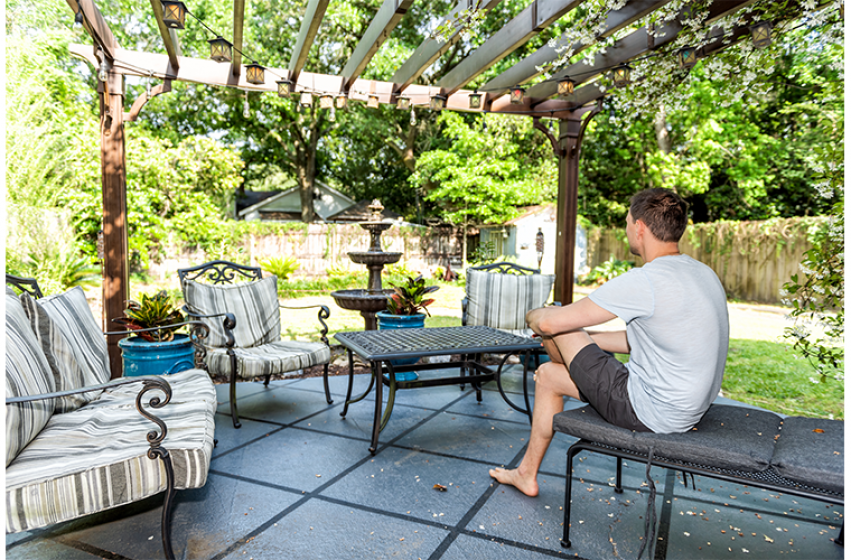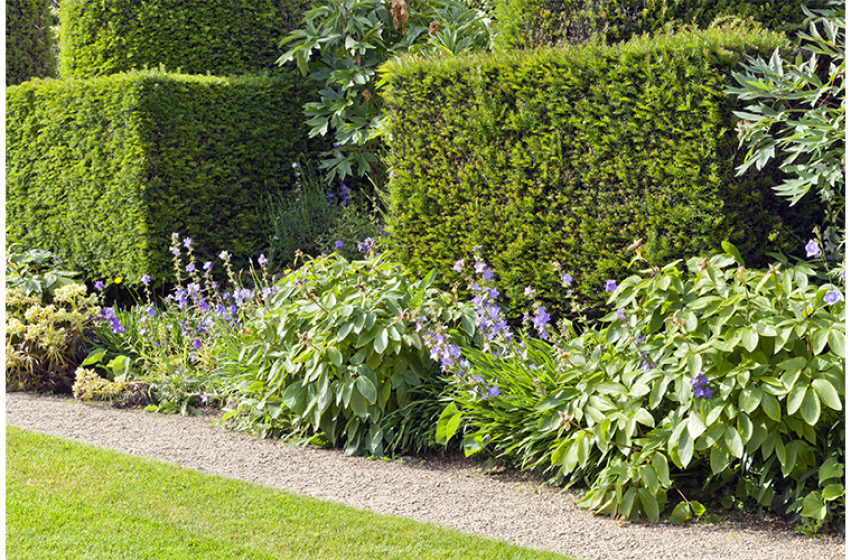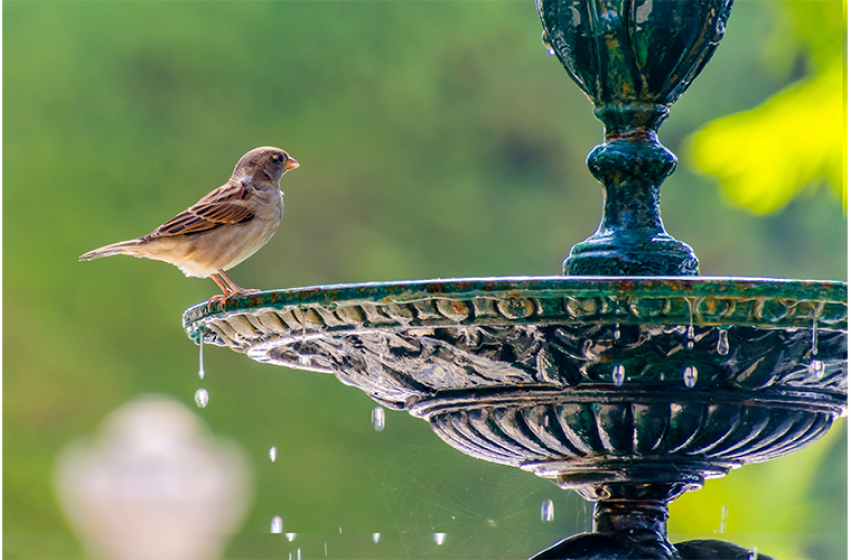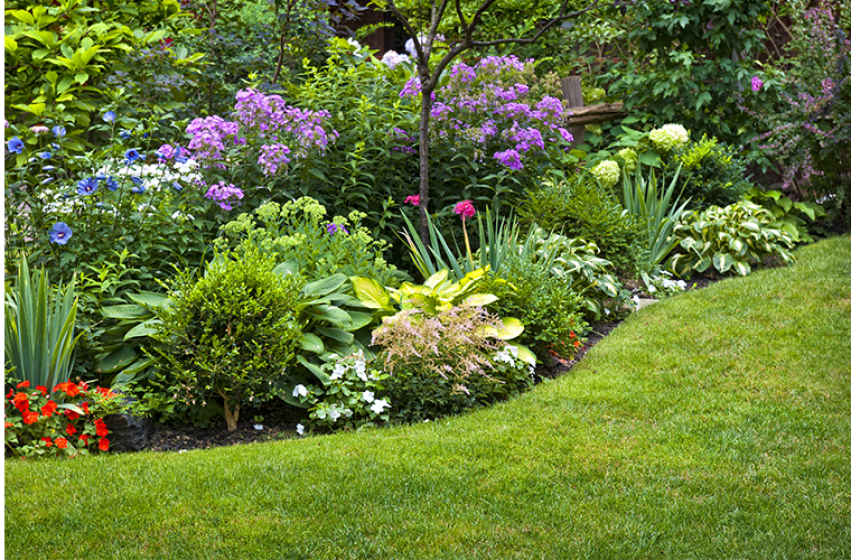When you find yourself in a sensational garden it’s difficult to say just what it is that makes it so great. And garden spaces don't have to be large to be great. This small corner of lawn—with a small patio, weathered pergola, and ample seating —is perfect for relaxing at the end of a long day.
Additionally, we all respond in various ways to different things based on our memories of past experiences. If we had a particularly pleasant garden experience in childhood (haven’t we all?), those pleasant feelings will recur when we find ourselves in similar settings.
There are, however, key characteristics of great gardens that, when combined in a skillful, artistic way, work together to create beautiful, satisfying, and even great gardens. While we sometimes call smaller areas “gardens” (rose garden, vegetable, herb and cutting gardens etc.), these are all just part of our larger gardens. Here are our 10 essential elements of a great garden.
ENCLOSURE
The best gardens have a sense of enclosure. They may not be completely surrounded, but there must be a sense of refuge, a feeling of safety and privacy. Visual boundaries don’t necessarily need to be inside your property line (“borrowed” scenery is a classic garden element), but great gardens are all verdant “spaces apart.” Enclosure can also provide a literal or psychological sound barrier for unwanted noise.
DISTINCT PERSONALITY
The very best gardens are a reflection of their creators’ and owners’ personalities. Unless you’re slavishly copying something from a book, magazine or Instagram, you can’t help but create something unique if you choose plants and garden decor you love. Never be afraid to experiment. If you like it, it works.
PLACES TO SIT
Gardens are not meant to just walk through. They’re for relaxation, conversation and solitary daydreaming. Gardens are also the best way to reconnect with nature. Make sure you have a place to rest and enjoy nature’s creatures and their activities and the beauty of all kinds of plants.
SHADE Where summers are hot, shade in the garden is essential. You’ll want to place your seating areas where there’s protection during the hottest hours of the day. In evenings, light plays an important role. String lights are a simple and inexpensive way to invite guests to visit various parts of a garden, or you can have a professionally designed lighting plan installed.
FOCAL POINT
Everything in a garden, just like room décor indoors, can’t be of equal importance. Our eyes need a place to rest. So create one, or just a few, primary focal points and, if your garden is large, some secondary points. The objects of these points can be sculpture, a water feature, a bench, or a striking plant. Add surrounding plants and other materials that support, but not compete with these focal points.
MYSTERY
Great gardens are places of exploration, surprise and even mystery. Break up large spaces into smaller rooms by using hedges. Use gates at transition points to provide an element of surprise when opened. Create a few deep flower or shrubs beds that invite deeper inspection. Unusual and intriguing plants are yet another way to create surprise and invite exploration.
COLOR. OR NOT.
Color is usually the first thing we think about when planning a garden. But remember, green is a color, too. It’s one of the most restful, and luxuriant ones as well. And there are a zillion tones of it. Nothing wrong with a sophisticated and subtle all-green garden where texture and shape provide the pleasure.
CONTRAST
When leaf and flower size and shape are too similar, a restless, busy garden is the result. You may not be able to put your finger on why you don’t care for certain plant combinations, but it’s usually because there’s no contrast in shape or size. Extreme contrast of either creates a lot of interest and drama.
RHYTHM
Here’s a subtle element. Rhythm is not confined to music. If you don’t repeat key colors, shapes, what you end up with is an odd collection, not a garden. Once again, they eye can’t rest. Repeat key colors, plants or textures. It will create minor resting points and unity.
WATER
Water (moving or not) provides a cooling sensation. But it can also change the character of a garden space—the sound of a fountain provides a bit of energy, whereas a still body of water is calming. The use of water in a garden can be visually and aurally subtle or grand and spectacular. Make sure your water feature fits the character you want.




